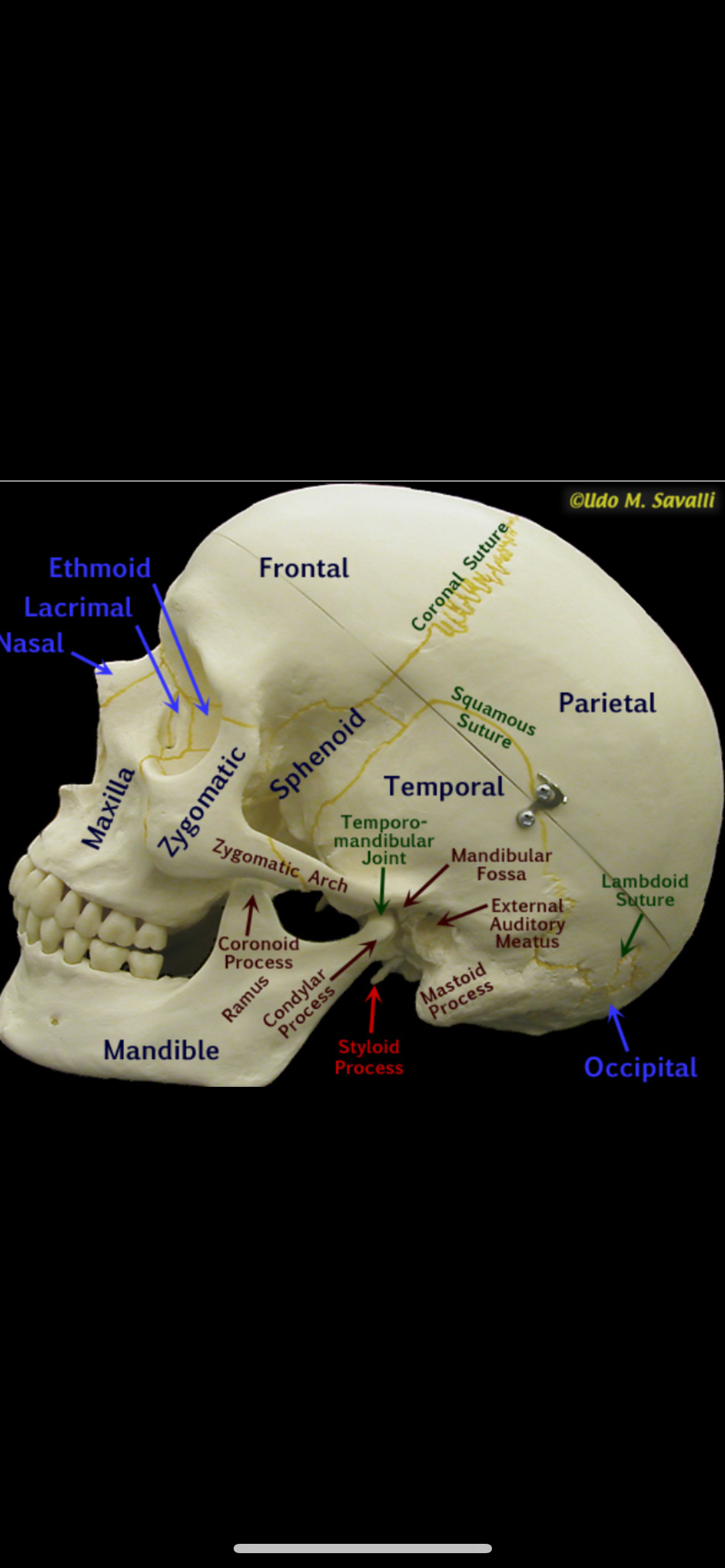bio cranial bones
1/18
There's no tags or description
Looks like no tags are added yet.
Name | Mastery | Learn | Test | Matching | Spaced |
|---|
No study sessions yet.
19 Terms
Ethmoid Bone
Light, spongy bone located between the eyes behind the nasal bones.
Forms part of the nasal cavity and eye orbit, and contains olfactory structures that help with sense of smell.
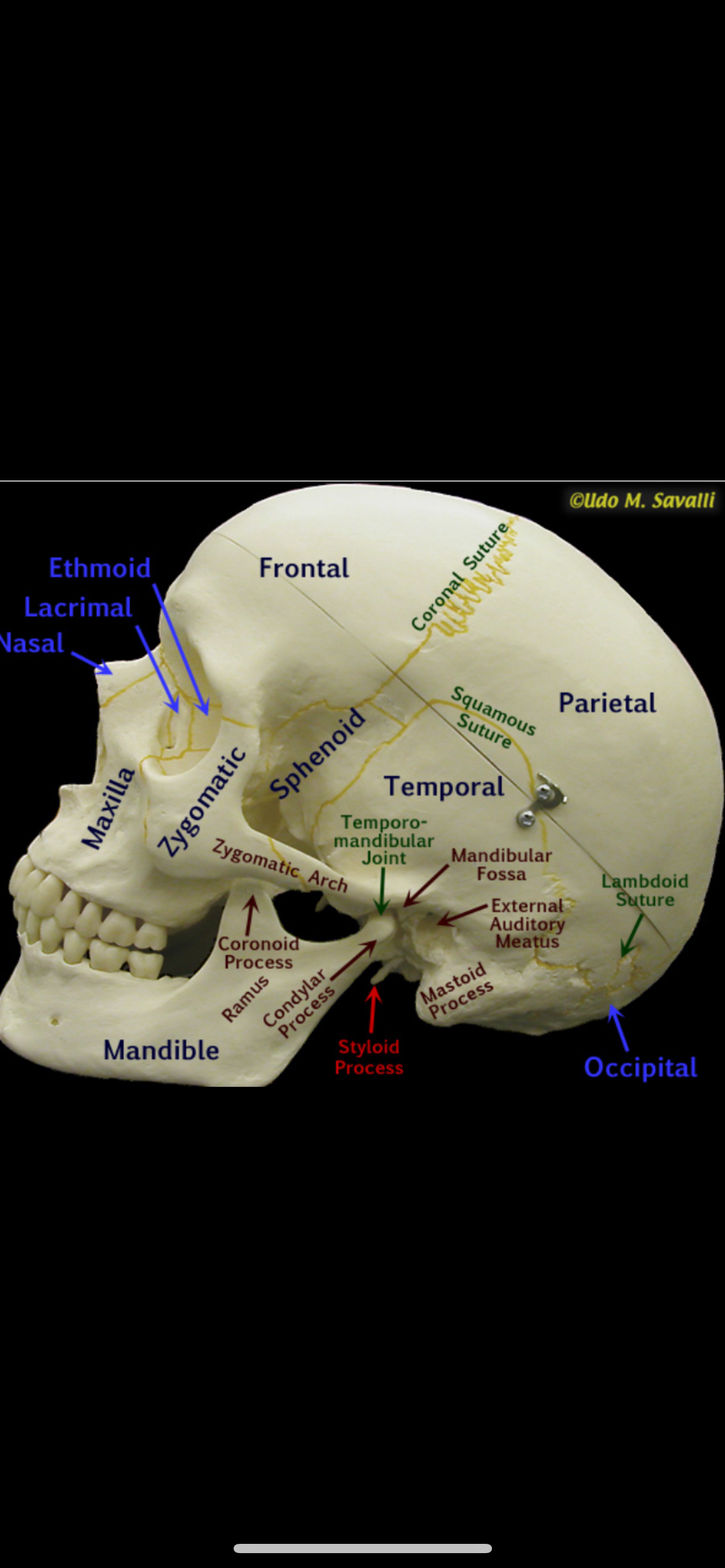
Lambdoid suture
Joint between the parietal and occipital bones.
Forms an inverted “V” shape at the back of the skull.
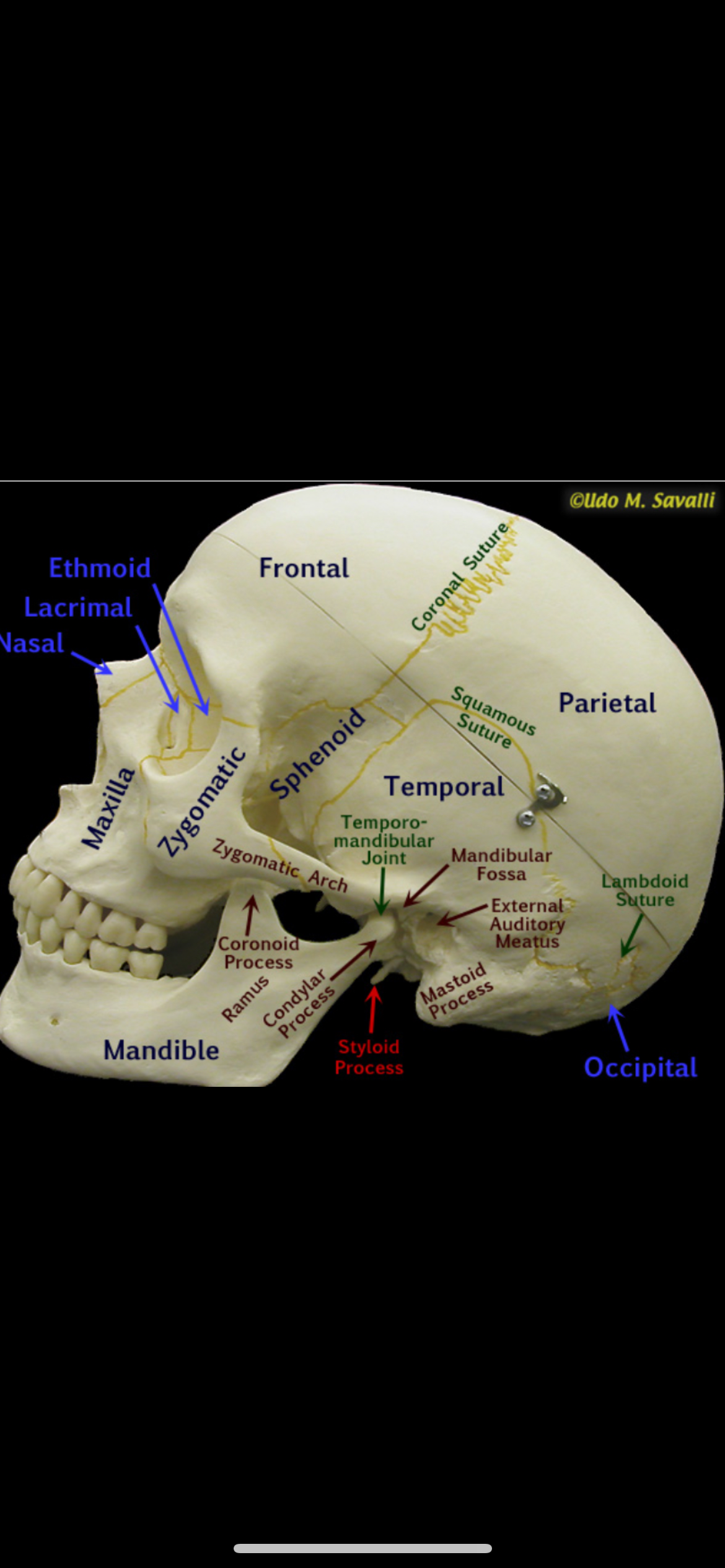
Squamous Suture
Joint between the parietal and temporal bones.
Runs along the side of the skull.
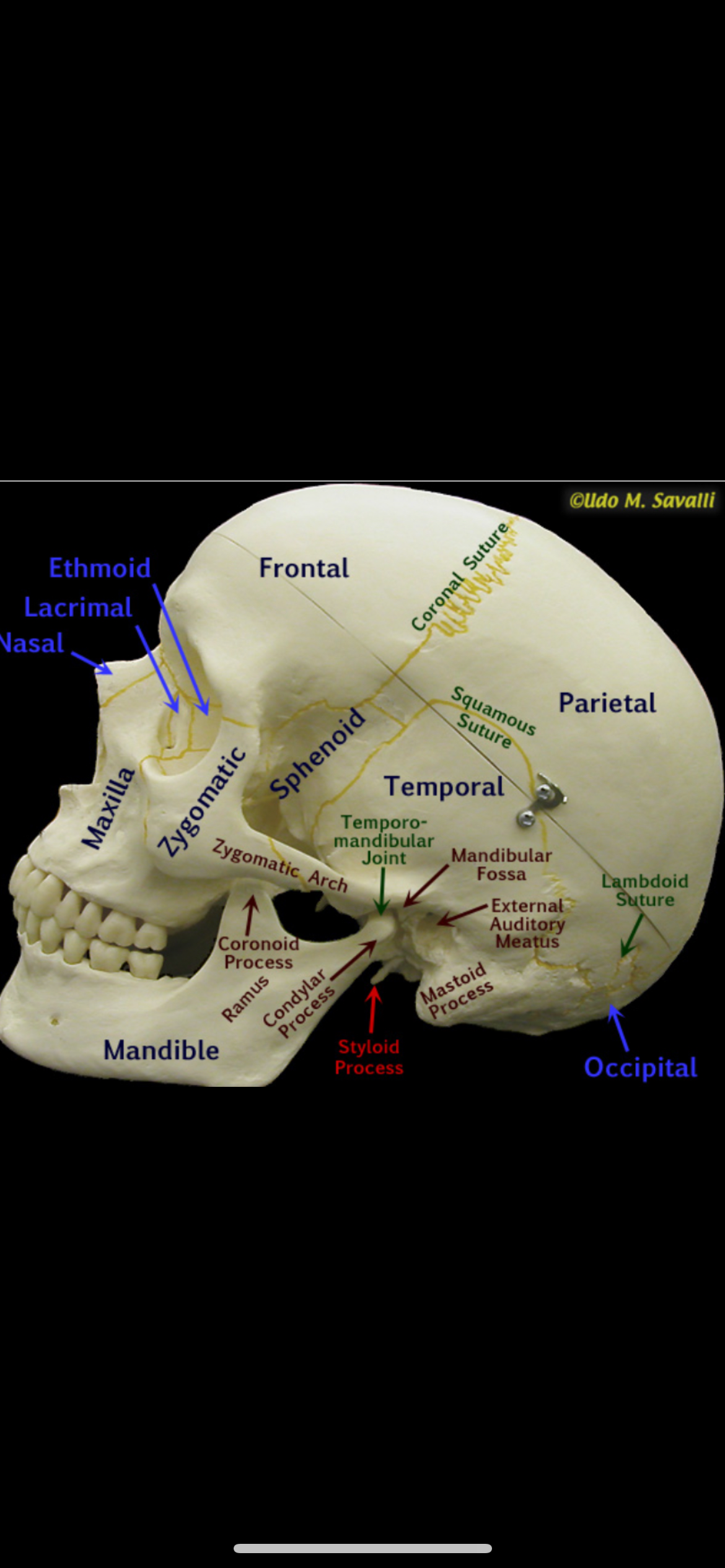
Coronal Suture
Fibrous joint between the frontal and parietal bones.
Runs ear to ear across the skull; named after the coronal plane.
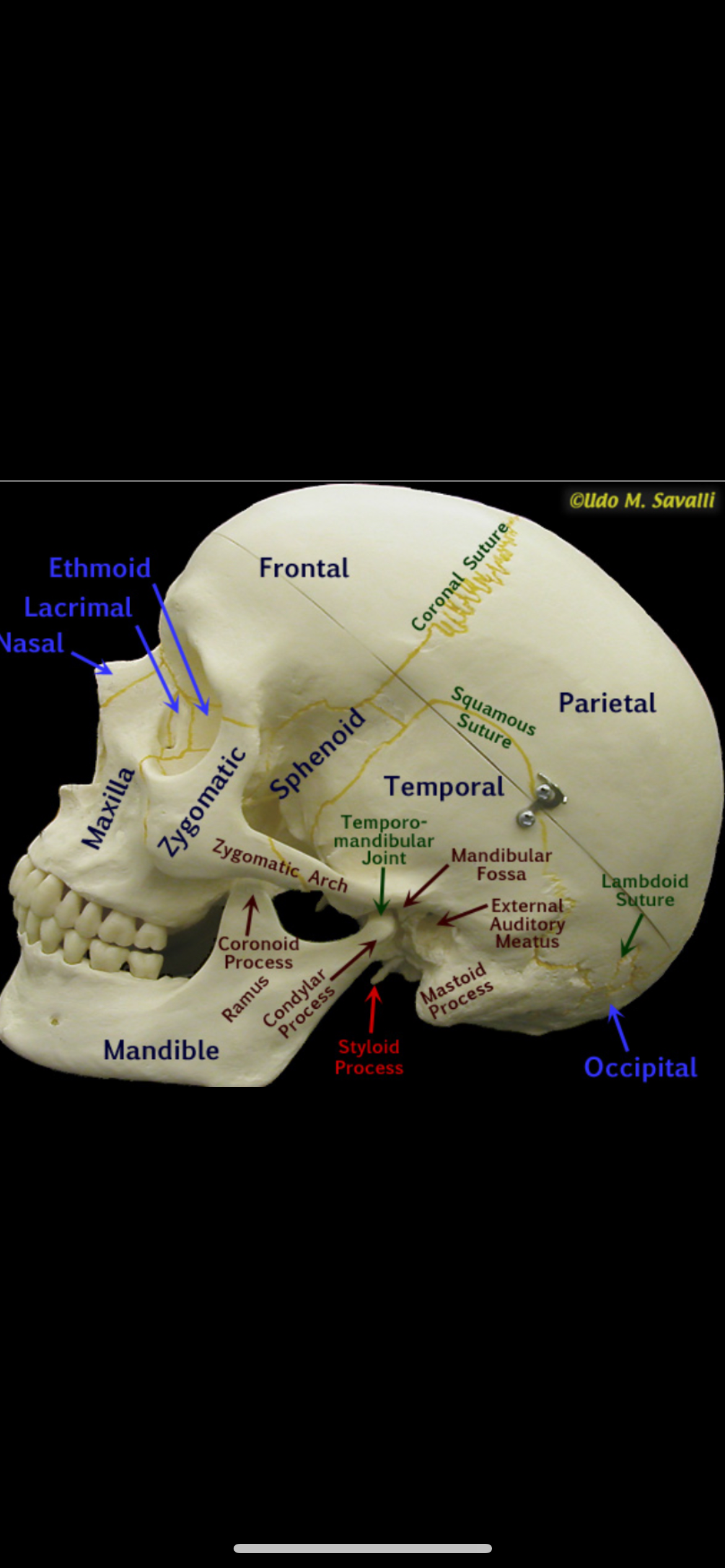
External Auditory Meatus
Ear canal opening in the temporal bone.
Allows sound waves to reach the eardrum.
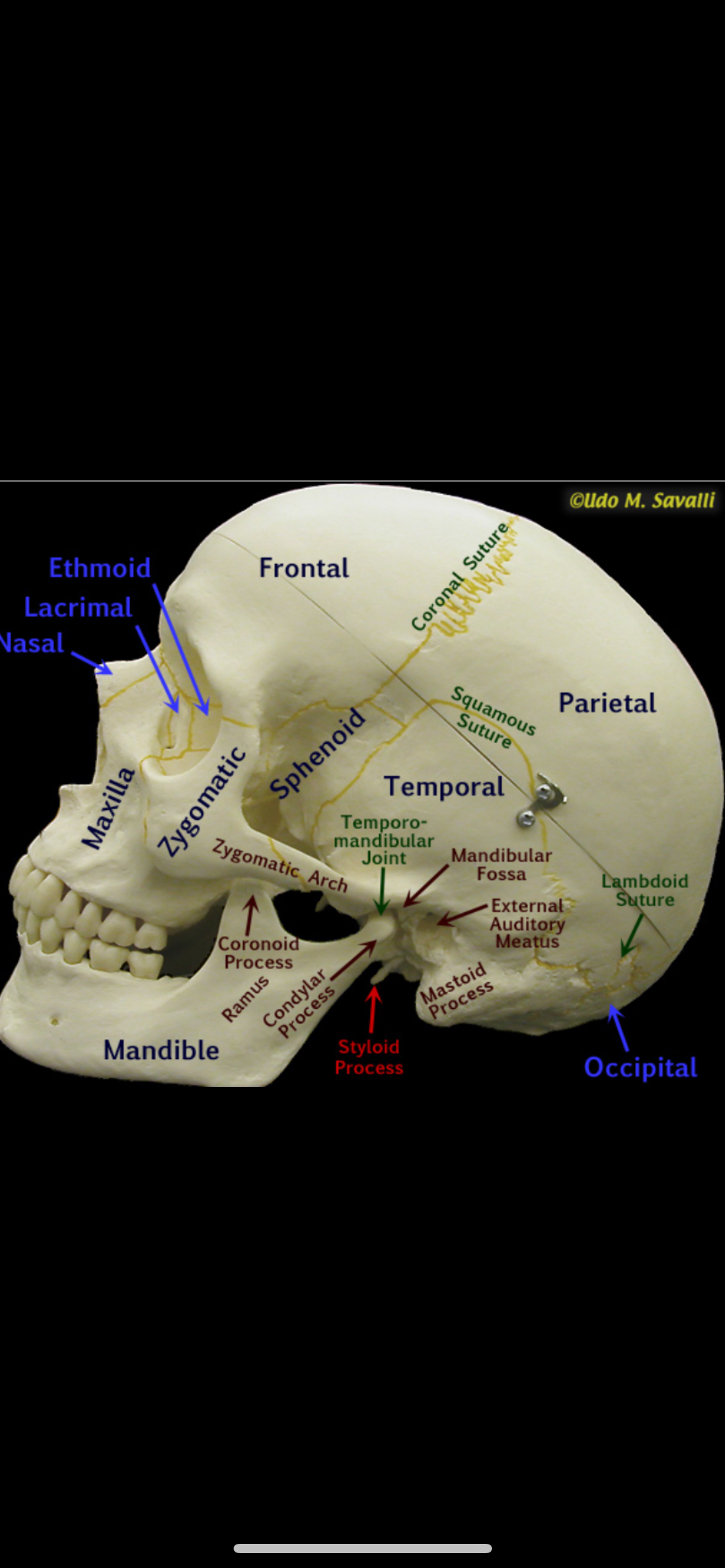
Mandibular Fossa
Depression on the temporal bone where the mandible connects.
Helps form the jaw joint (TMJ).
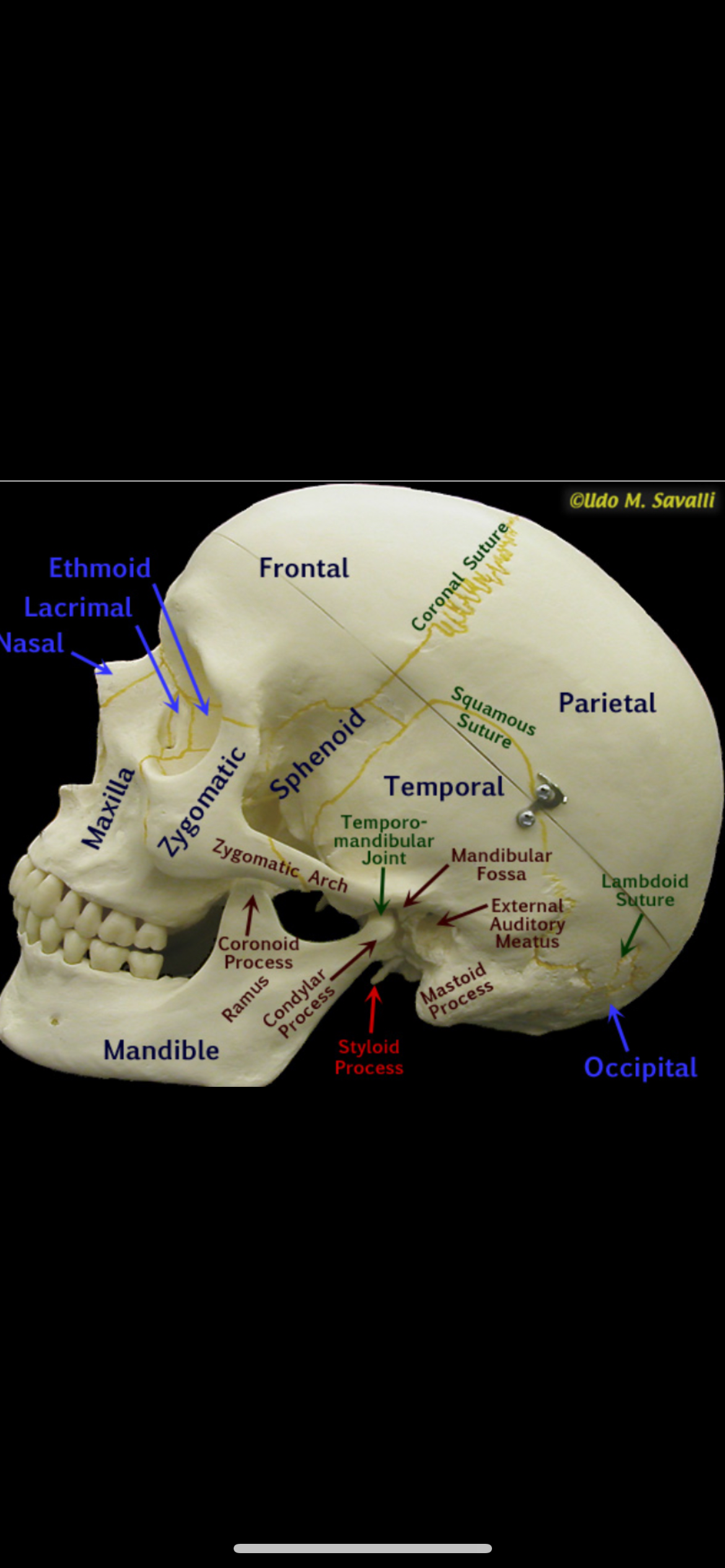
Foreman magnum
Large opening at the base of the occipital bone.
Connects the brain to the spinal cord; allows passage of nerves and blood vessels.
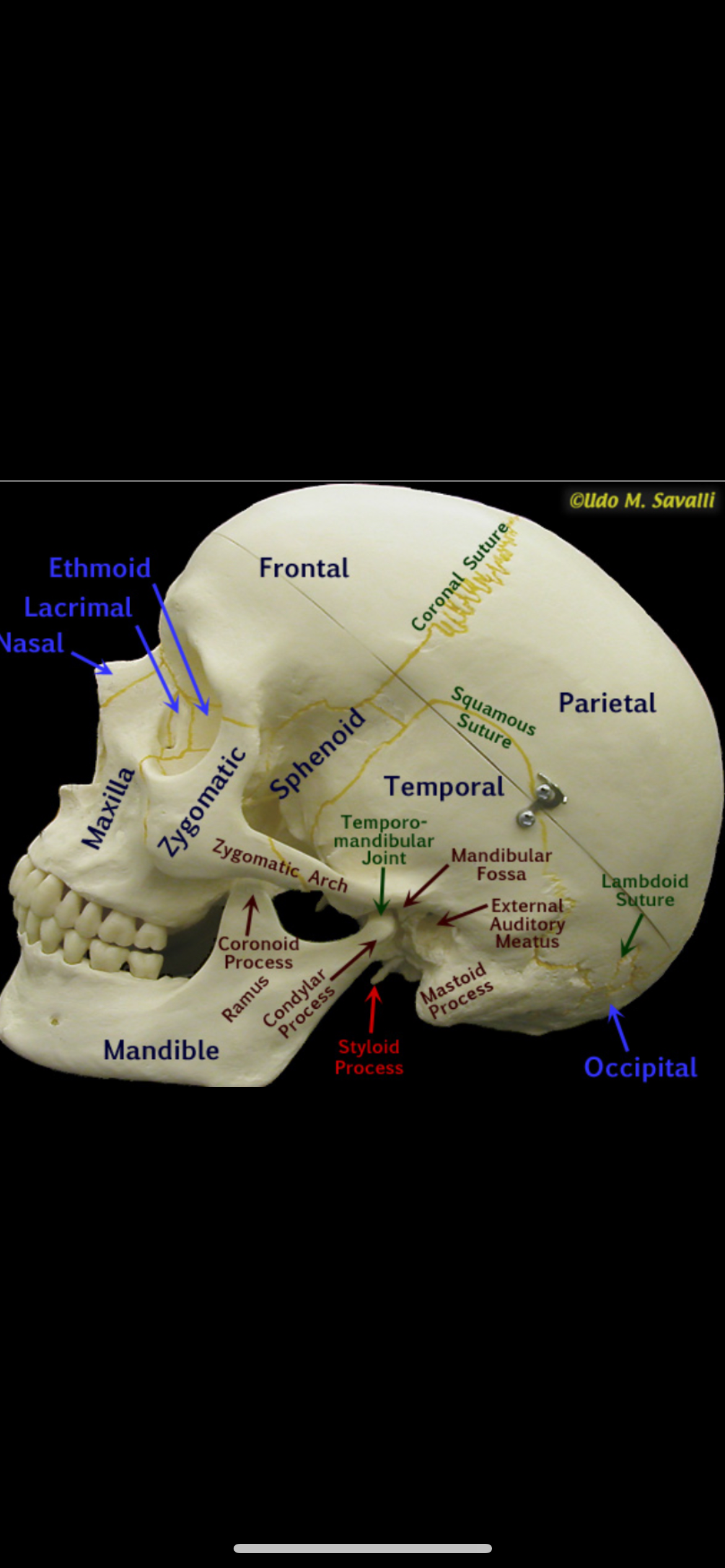
Condylar Process
Rounded projection that articulates with the temporal bone.
Forms the temporomandibular joint (TMJ) for jaw movement.
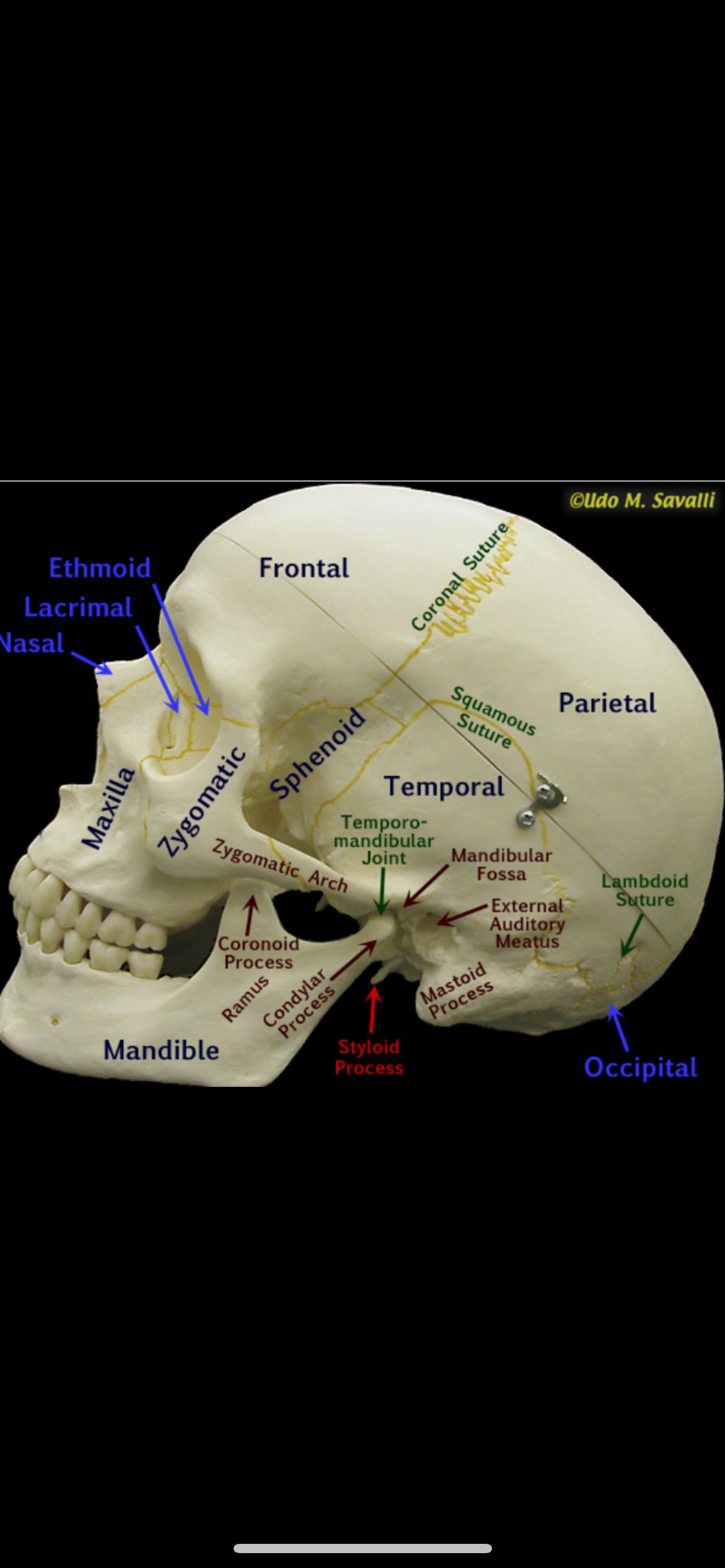
Coronoid Process
Thin, triangular projection on the mandible.
Attachment point for the temporalis muscle (used for chewing).
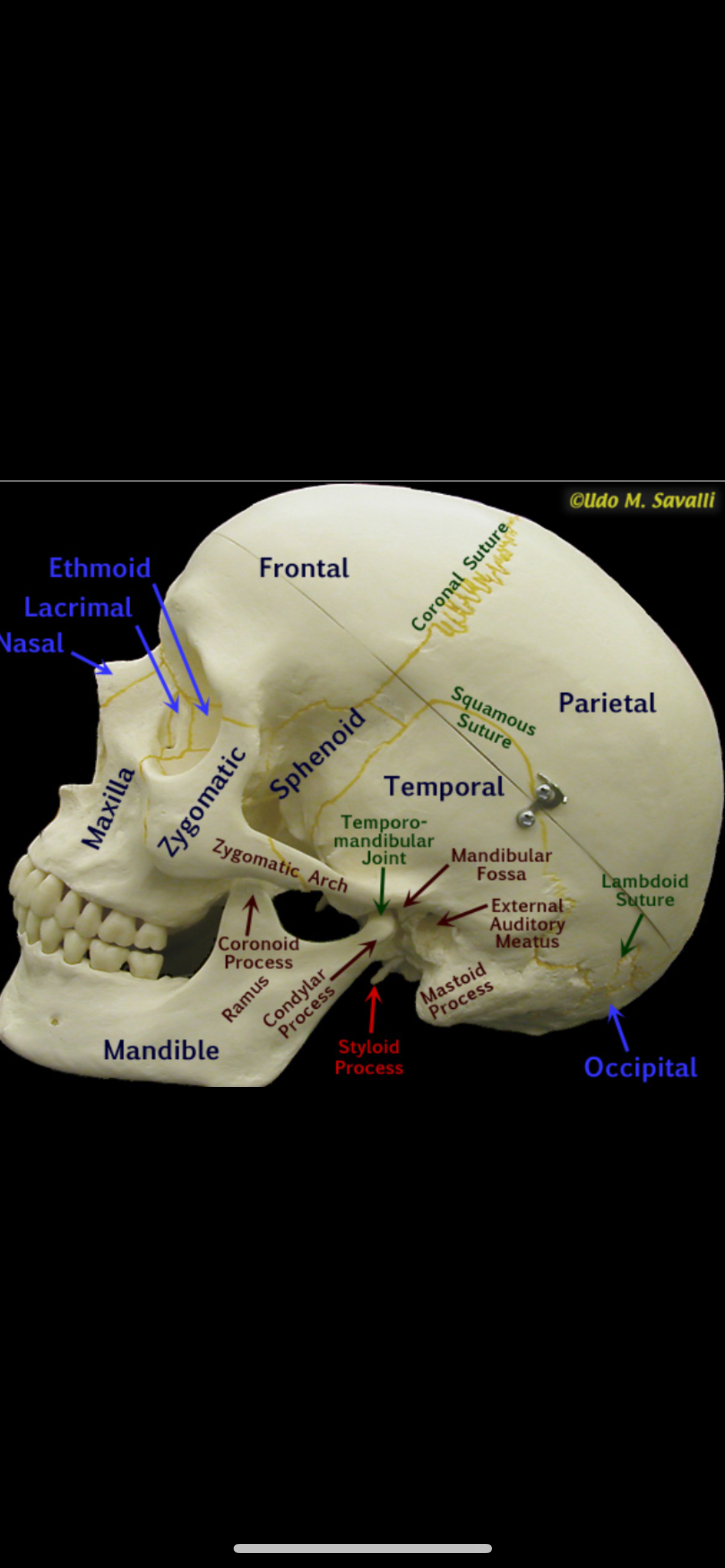
Mastoid Process
Rounded bump behind the ear (part of the temporal bone).
Attachment site for neck muscles; contains air cells connected to the middle ear.
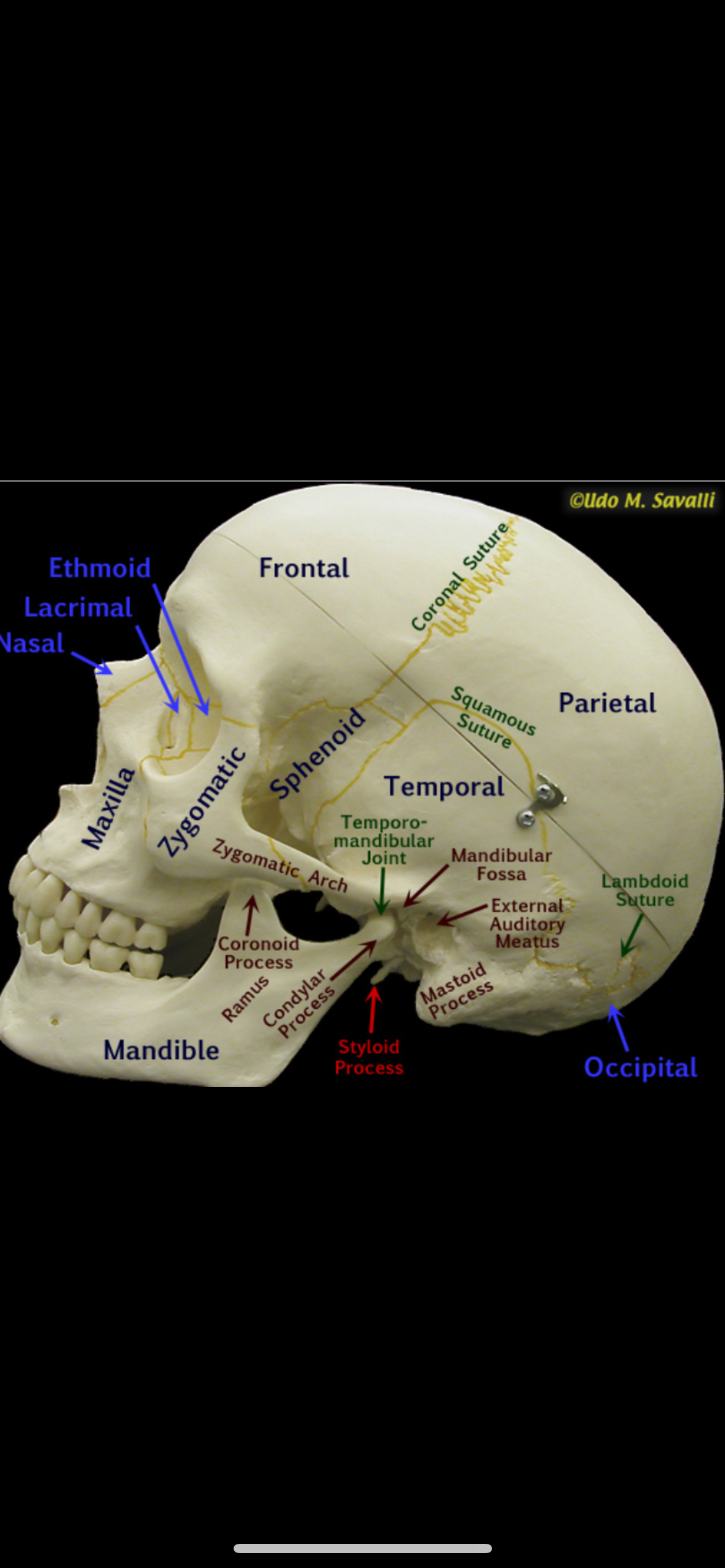
Styloid Process
Sharp, slender projection below the ear (on the temporal bone).
Attachment site for tongue and neck muscles.
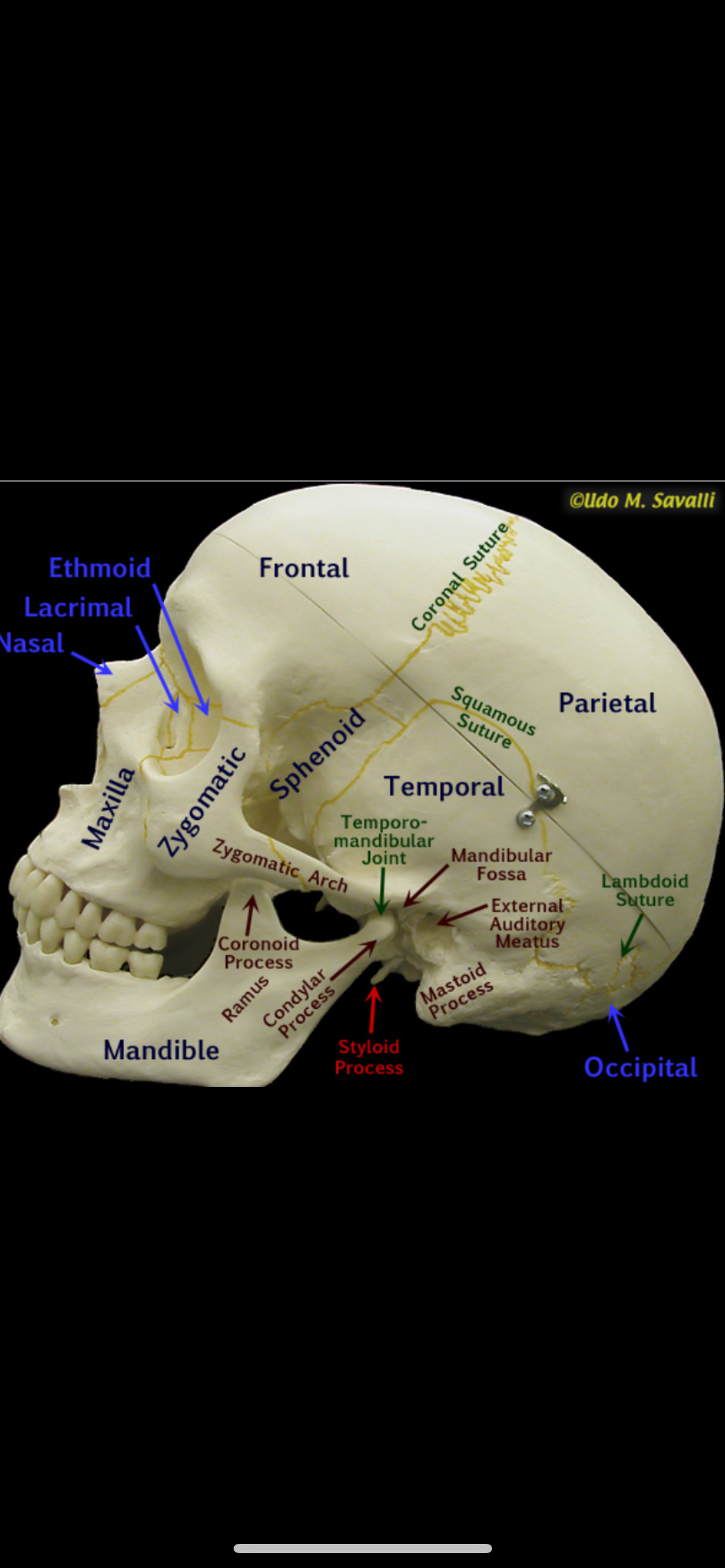
Zygomatic arch
Bony bridge formed by the zygomatic and temporal bones.
Gives shape to the cheek and serves as a muscle attachment point.
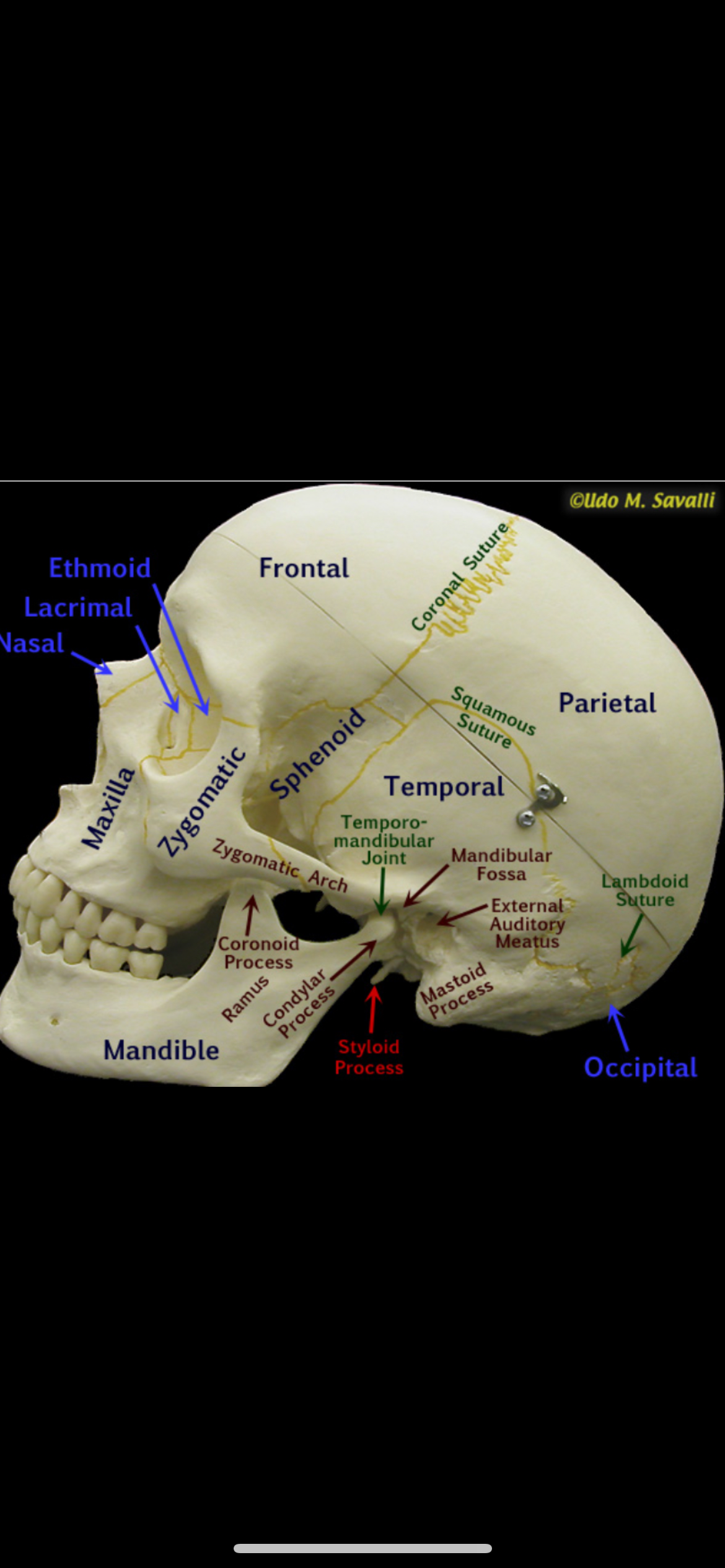
Mandible
Lower jaw bone; only movable bone of the skull.
Holds the lower teeth and connects to the temporal bone at the temporomandibular joint (TMJ).
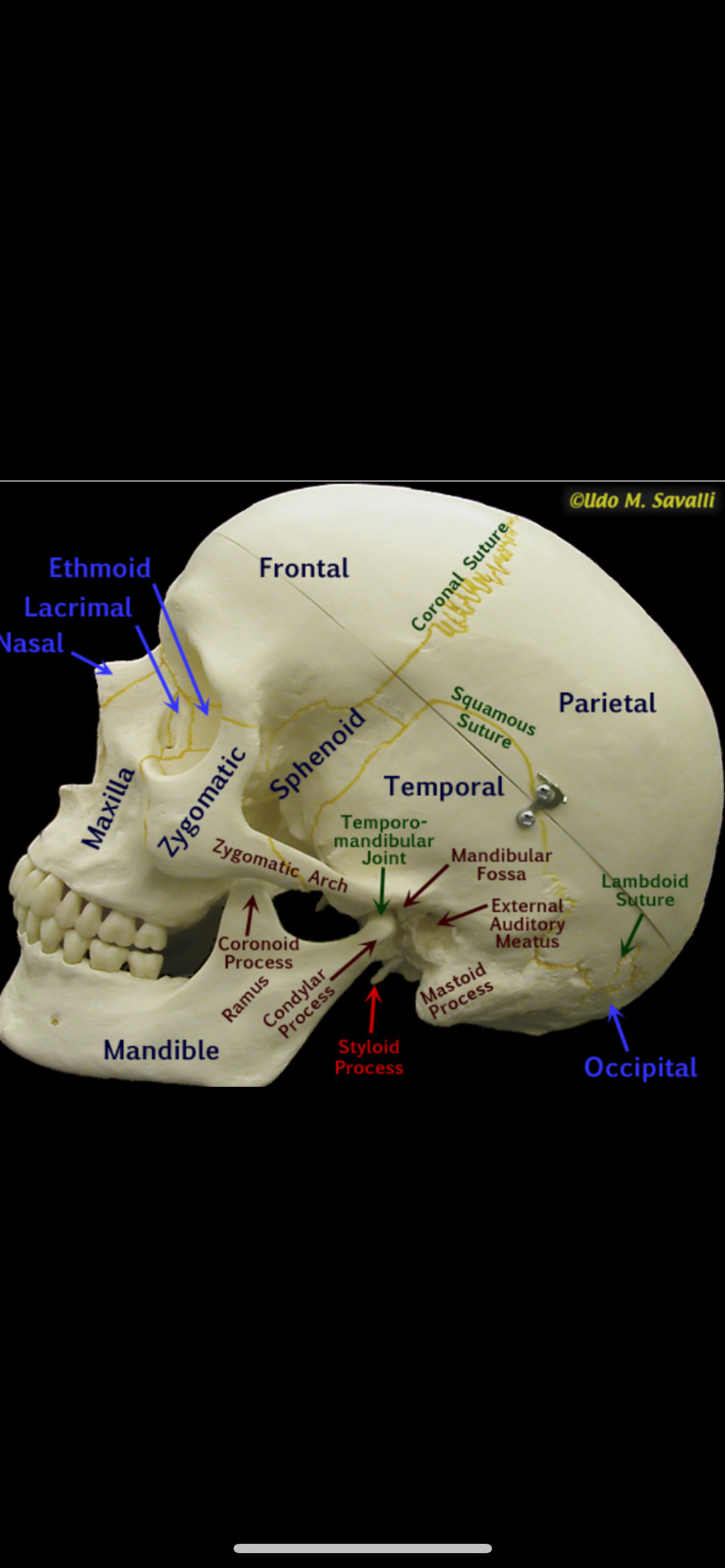
Maxilla
Upper jaw bone; forms part of the nose, eye sockets, and roof of the mouth.
Holds the upper teeth and helps shape the face and nasal cavity.
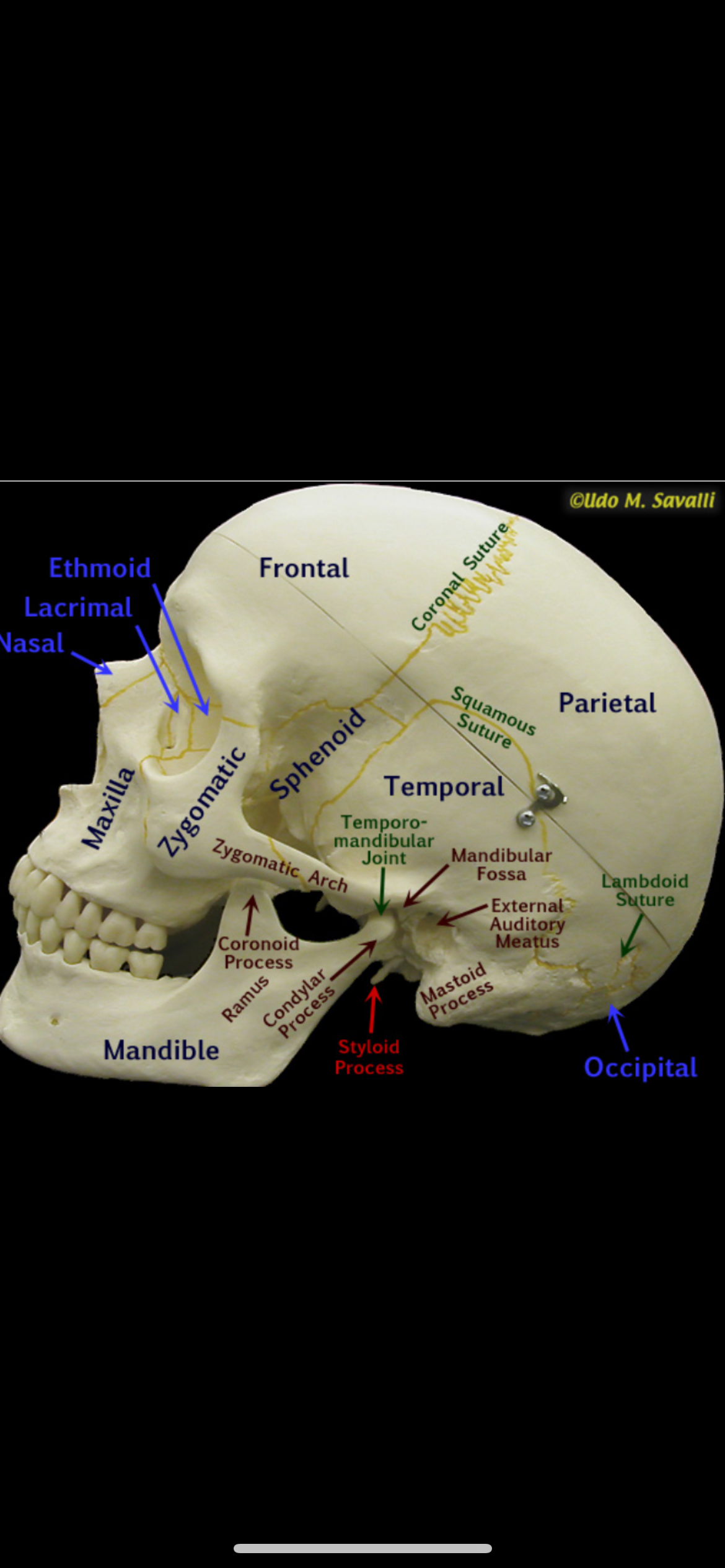
Nasal Bone
Two small rectangular bones forming the bridge of the nose.
Support the cartilage that shapes the lower portion of the nose.
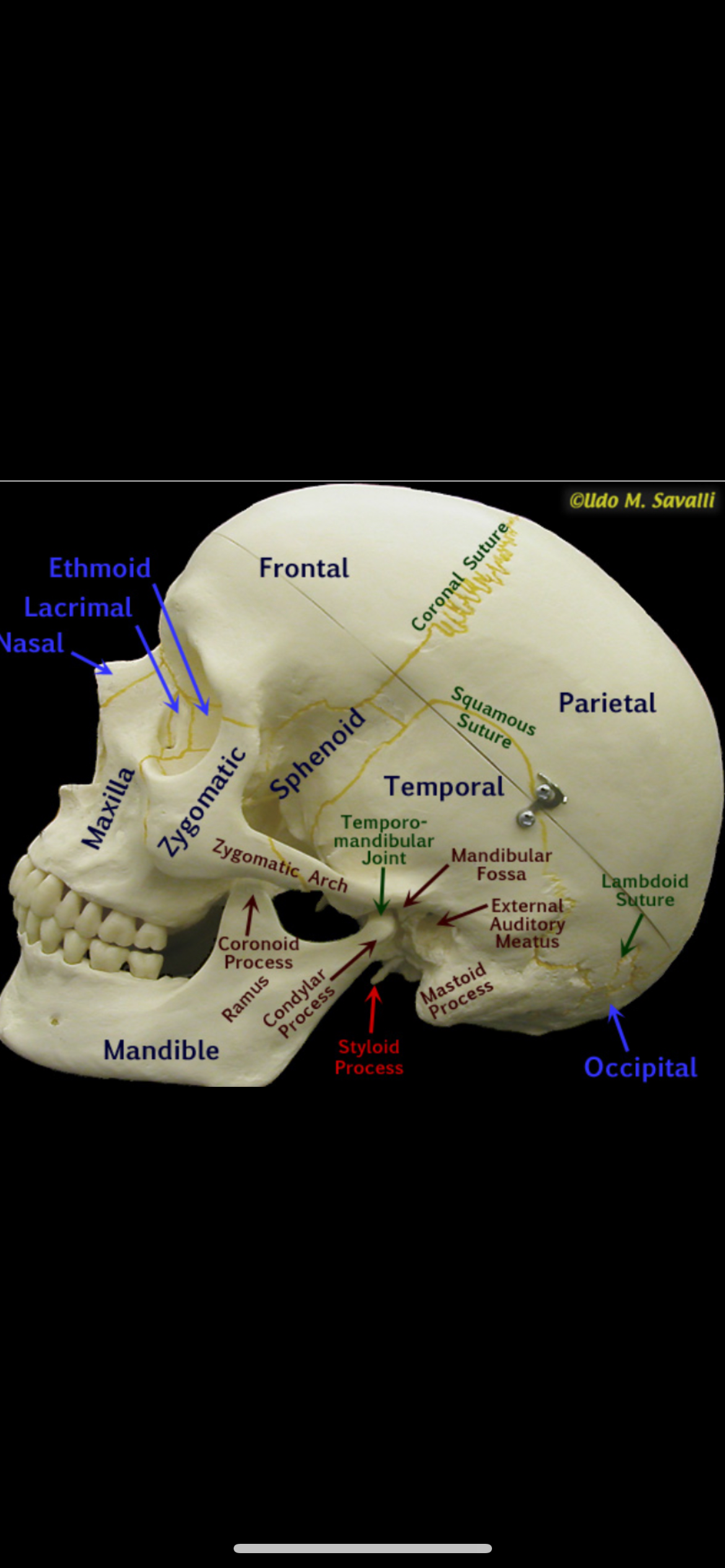
Lacrimal Bone
Smallest facial bone, located at the inner corner of the eye socket.
Contains the tear duct opening for tear drainage into the nasal cavity.
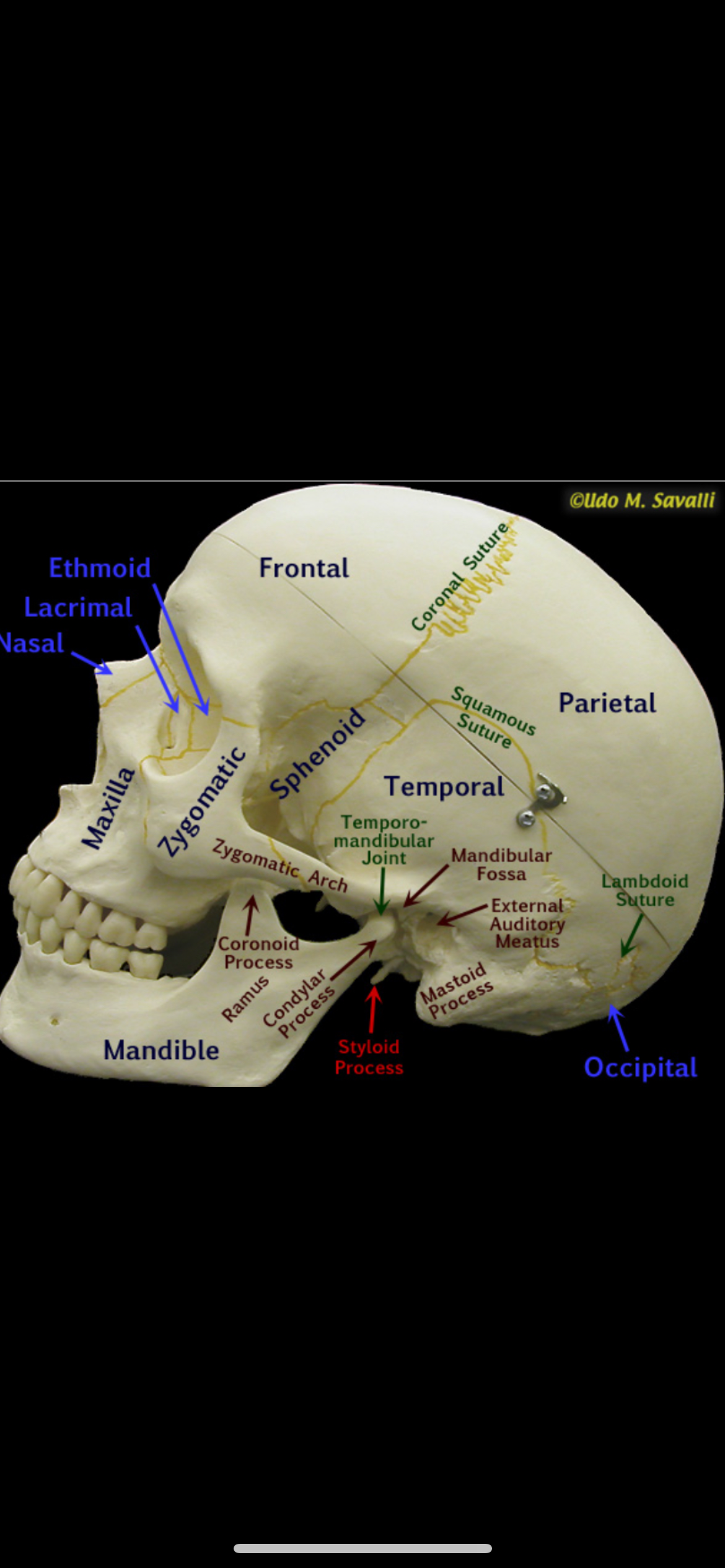
Zygomatic Bone
Also called the cheekbone.
Forms the prominence of the cheeks and part of the eye orbit.
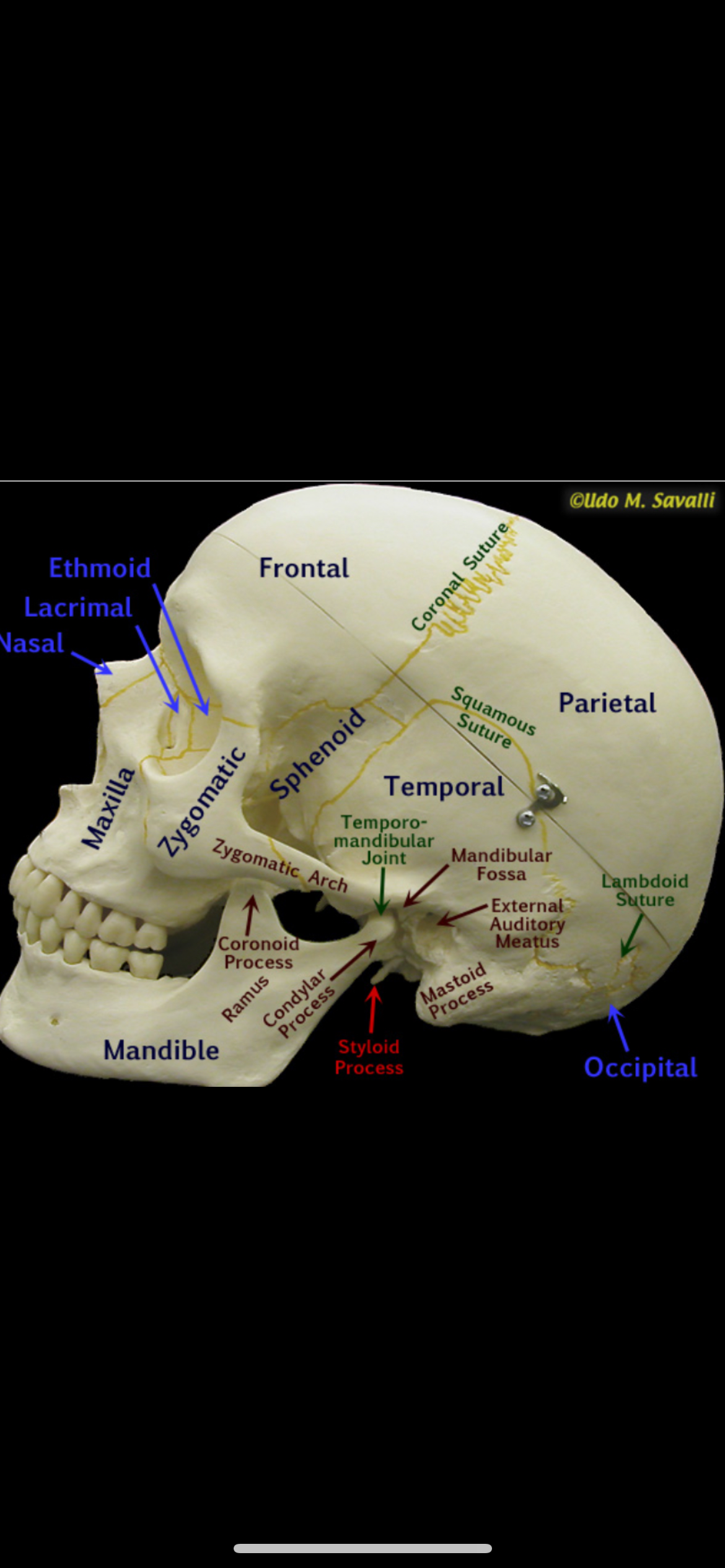
Sphenoid Bone
Butterfly-shaped bone located in the middle of the skull, behind the eyes.
Connects (articulates) with nearly all other cranial bones; forms part of the eye socket and base of the skull.
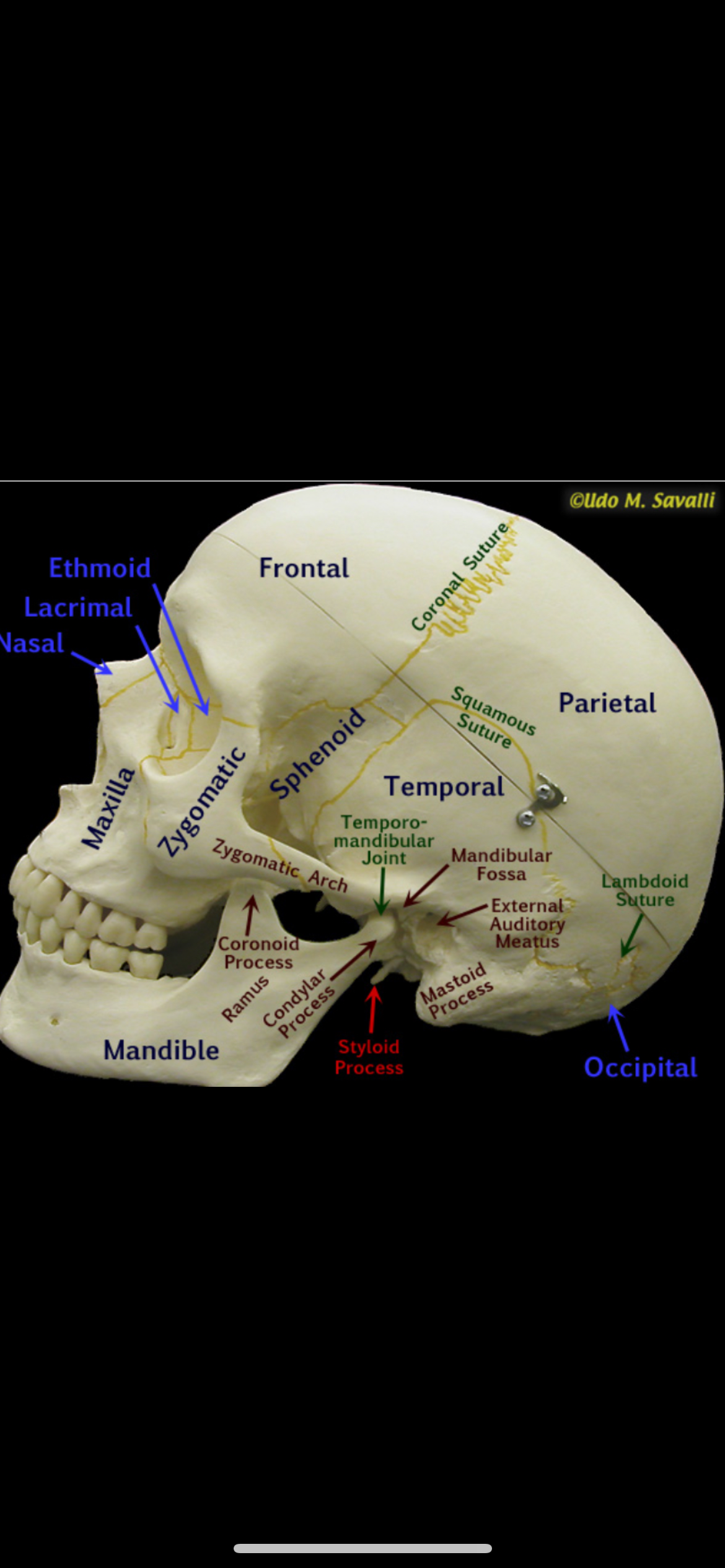
Temporal Bone
Located on the sides of the skull (near the ears).
Houses the ear structures and forms part of the cheekbone (zygomatic arch). Includes areas like the mastoid and styloid processes.
